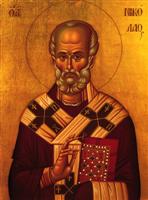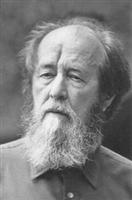
A few days ago, before Christmas, I watched
The Da Vinci Code. I hadn't read the book and was waiting for a copy of the movie to make its way into my hands. I walked up the road to talk to one of my neighbors the other night as he cleaned out his garage. He owns
The Da Vinci Code DVD. The conversation turned to the film. We talked about Church history. He let me borrow the DVD.
I stayed up late that night. What did I think of the movie? I was entertained. It was sort of like
National Treasure in a way. It's an interesting piece of fiction. It's perhaps more like science fiction than historical fiction. I could write an analytical article describing the historical and theological inaccuracies in the film, but that's like writing about the scientific inaccuracies in
Star Wars,
Dr. Who, or
Battlestar Galactica. The movie not only misrepresents the early Church but even misrepresents the heretics. The history and world presented by Dan Brown is like what one might encounter when traveling into an alternate universe. (Watch
Dr. Who or
Stargate.)
Some people may confuse the fiction in this film with reality. If the movie were presented as a documentary, then the movie should be condemned as a work of heresy, a deviation of the truth that can lead people away from a healthy understanding of God and, therefore, themselves and their relationships with others. The movie isn’t' a documentary (which would be offensive), but fiction. It's based on a novel. The twisting of the truth in the movie just makes the movie look kind of ridiculous to the knowledgeable. Nevertheless, it's entertaining. It reflects the yearning and confusion of our society.
The movie can have a positive effect. After watching the film there may be those who want to learn what is really going on. Fiction can peek people's interest in the real story behind it. On the other hand, the movie can just confuse a lot of people who are already confused about what is true and what is false. In the first century St. Paul the Apostle wrote to St. Timothy saying, "The time is coming when people will not endure sound teaching, but having itching ears they will accumulate for themselves teachers to suit their own likings, and will turn away from listening to the truth and wander into myths" (RSV). Nothing has changed. The truth is far more interesting and beneficial than fiction, but deeply knowing the Truth takes time, calls us to get over ourselves, and requires personal committment.
Anyone who wants to know who Christ is, who St. Mary Magdalene is, what the Church is, and what the holy grail is can find the real meaning in the Orthodox Church, the original, ancient Church rooted in Christ and founded upon the Holy Apostles. We regard Mary Magdalene as "Equal to the Apostles" and sing to her, "When God, who is transcendent in essence, came with flesh into the world, O Myrrhbearer, He received you as a true disciple, for you turned all your love toward Him; Henceforth you would yourself work many healings. Now that you have passed into heaven, never cease to intercede for the world!" Within the Orthodox Church the truth has been preserved and lived for 2,000 years. For us the truth doesn't need to be rediscovered. It's a way of life. To many Americans, however, the Orthodox way of life remains an unknown secret, brilliantly shining, but hidden in the shadows of ignorance.
In
The Da Vinci Code story secret symbolic meaning is applied to Leonardo Da Vinci's 15th century mural,
The Last Supper. If people seek to discover what the early Church, the Orthodox Church, has believed since the beginning, they can find the meaning within the Church in our sacred iconography. What is the true meaning of Christmas? Who is the One who was born in a cave and laid in a manger? The holy icons teach it today as they have for centuries. When those who live the Orthodox way look deeply into the image they can see the truth in the icon and look beyond the wood and paint to encounter the One Himself who has been born among us.
Copyright © 2006 by Dana S. Kees. The image is in the public domain.
 I check out a few websites almost every day for relevant news coverage. One of my favorite websites for daily viewing is GetReligion.org. The site doesn't just cover religious news stories, but provides analysis on how the secular press handles new stories related to religion. The site derives its name from a quote by William Schneider: “On the national level the press is one of the most secular institutions in American society. It just doesn’t get religion or any idea that flows from religious conviction.” I find the way the press covers the Orthodox Church and our way of life particularly interesting, but the way the secular press covers religious stories in general is worth considering. Press coverage tells us a lot about our society and culture.
I check out a few websites almost every day for relevant news coverage. One of my favorite websites for daily viewing is GetReligion.org. The site doesn't just cover religious news stories, but provides analysis on how the secular press handles new stories related to religion. The site derives its name from a quote by William Schneider: “On the national level the press is one of the most secular institutions in American society. It just doesn’t get religion or any idea that flows from religious conviction.” I find the way the press covers the Orthodox Church and our way of life particularly interesting, but the way the secular press covers religious stories in general is worth considering. Press coverage tells us a lot about our society and culture.




